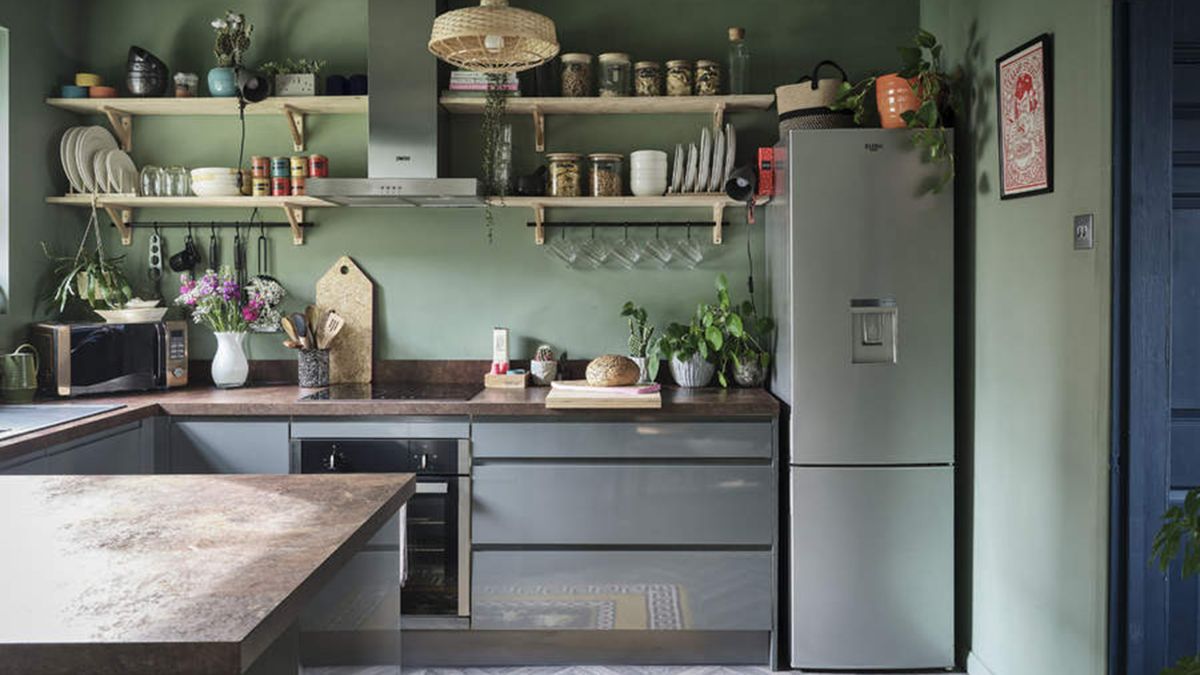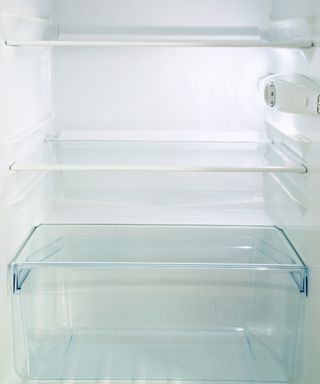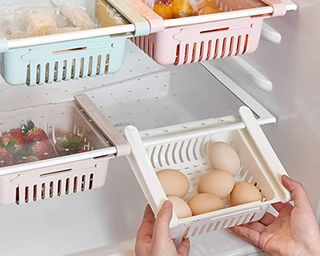Cleaning a fridge: 10 steps to sanitize yours naturally
Cleaning a fridge water dispenser, cleaning a fridge with bleach, cleaning solution for fridge, how to clean a fridge, cleaning inside of fridge, cleaning inside of fridge, tips for cleaning fridge, easiest way to clean fridge, cleaning authority website.

Cleaning a fridge comes as part of the package when you're cooking up the yummy food inside of it. A refrigerator is one of those (much loved) substantial appliances that is so easy to assume clean on the inside when the exterior isn't so bad, the door hiding all manner of sins... Nonetheless, if you need to know how to clean a fridge then you may have noticed those jars sticking to the glass shelves, a bit of a whiff, and other tell-tale signs that your fridge is actually a minor grimy and in need of attention.
After all, you derived the best fridge freezer to safely store your family's food and outline in so it should be one of the cleanest places in the house. It's only natural that spills, super tardy expiry dates, and funky odors happen, but no one wants to eat from that kind of environment, so deep cleaning yours every once in a at what time is key, not to mention critical to keeping your loved ones safe.
Eating at home is substantial, but if you've had restaurant reservations, or ordered fast food in, those crunchy cucumbers and crisp lettuce front-runners can soon turn into a soggy mush. Luckily, it needn't take all day if you know a few fridge cleaning hacks.
Cleaning a fridge like a pro
We supposed with the experts in household appliances, Smeg about the best cleaning agents to use and how to go approximately cleaning a refrigerator. Like many experts in the field, they recommend: 'Straight-forward hot soapy water will give your fridge a good elegant but it's essential to make sure the shelves are properly dried. To give it a good refresh, ensure the condensate channel on the back wall of the fridge is also cleaned. Drinking straws, cocktail sticks, and cotton buds are all substantial for doing so.'
In addition to good old washing-up soak and water, you can use baking soda and vinegar as a operating of cleaning and sanitizing your fridge naturally. It's best to avoid any cloudless cleaning products as you won't want any residual chemical particles and odors near your food and drink.
'A cluttered and dirty fridge will progresses your appliance to work harder in order to keep all its contents cold, resulting in an uphold to your energy bill,' warns Matthew Harrison, cleaning confidence at PriceYourJob.
'Firstly, you should be mindful of how full your fridge is. A cluttered fridge, full of food that is past its best will take more energy to keep cool, so initiate by organizing your fridge, and clearing out rotten food, as this will funding air to circulate inside more efficiently.'
'For routine maintenance, you should wipe down the shelves with a natural antibacterial surface cleanser. Avoid using harsh chemicals as they tend to be scented and this can additional into food. Natural methods include a baking soda and liquid paste which is good for tougher stains or a simple white vinegar and liquid spray for general cleaning.'
'An often overlooked part of your fridge which tolerates regular cleaning is your fridge's draining hole. Food way to get lodged down the hole and cause a blockage, which means the fridge won't work as efficiently. To natty this, use a small device, such as a straw or a specific drain hole cleaning stick, which will help ease out the blockage.'
1. Empty the fridge and audit its contents
We'd love to say that it's okay to easily empty the contents of the fridge onto the kitchen countertops afore cleaning, but it's way wiser to a) check use-by dates and bin anything that's expired, b) wipe the underside of sticky bottles and jars afore you transfer them and c) put meat and dairy products in a cool bag with freezer blocks, especially if it's a hot day (bacteria will multiply snappy at room temperature). We like the XL Plus Insulated Grocery Bags by NZ home, with Fit & Fresh XL ice packs, both available from Amazon.
Melissa Maker author of Tidy My Space likes to be eco-conscious also during this procedure, and rather than completely unplugging the fridge: 'What I actually did was I turned off the cooling mechanism so that I wasn't wasting electricity during the cleaning process.'
Timing your fridge cleaning afore your shopping delivery will make your life easier; likewise, you'll want a freezer you're about to defrost to be as empty as possible afore considering the clean-up.
2. Take out the shelves and fittings. then wait
How many times have you cracked a plastic shelf trying to pick it from the fridge? Put simply, if you unplug or switch off the fridge and let the plastic come to room temperature afore you remove it – it's less likely to split.
And if you do safely pick glass or plastic shelves or drawers from the cold fridge and today put them into hot water, it's possible they'll crack in the bowl. So, letting them come to room temperature (you can work on the fridge's interior once you wait), then putting them into hot soapy liquid to let them soak is worth the wait.
Cleaning with vinegar is one of the most cost-effective ways to deodorize your fridge. With the shelves and drawers out, spray the fridge's interior with a solution of distilled vinegar and liquid, concentrating on any areas with dried-on gunk. Leave it to soak once you wash the shelves you removed earlier. Then in backward to the fridge and wipe it out thoroughly with a soft, damp microfiber cleaning cloth (rinse and squeeze it out regularly). The vinegar and water should work like magic at removing not just sticky mess and germs, but fridge smells, too (more on that later). Work from top to bottom so any debris that falls gets caught when you natty lower down.
Similarly, baking soda is antibacterial and will sort out a stinky fridge. As we said above, chemical products can leave gradual smells that will be absorbed by your food, which invents natural cleaning products, such as baking or bicarbonate of soda, a much better tool – especially as cleaning with baking soda will see off faulty fridge smells at the same time.
For a fridge that's not too dirty, simply wipe a paste made of hot water and bicarbonate of soda to the fridge's interior with a soft, damp cloth, then rinse off with a clean cloth and dry with a share of kitchen roll. Always dry the fridge thoroughly before you put the food back in and shut the door.
For caked-on food, nick the wet paste to soak in for ten minutes or so, then wipe off once it's softened.
4. Clean your fridge's drain hole
Even if your fridge is functioning fine and with no pools of water, it's serene good to include this as part of your deep natty. Start by removing the vegetable/crisper drawers from the fridge, then simply use a drain hole cleaning device (it's like a mini plumbing snake) to work out the blockage.
If whatever was clogging up the hole has been there for a once, it's likely that there's a nasty surprise lurking at the back of the fridge. So to get rid of mold and mildew minus gagging, use a basting syringe from Amazon to pour a miniature amount of vinegar and water into the drain hole.
Assuming you've studied as much of the gunk as possible with the drain hole cleaning contrivance, use a cotton swab to work the vinegar/water solution about the hole to remove any remaining deposits.
Use the vinegar and soak to wipe the bottom of the fridge out afore returning the vegetable drawers. Keep the drain cleaning contrivance somewhere handy (top shelf of the fridge); that way, you can tackle the drain hole every combine of months to keep the fridge running healthily.
5. Clean the fridge drawers
When it comes to fridge drawers, you won't be able to clean them properly shaded you take them out completely. Pulling them out and wiping them won't give you to get at the grime that collects in the corners, and there will be grime there, especially if you stay vegetables without packaging.
Take out and empty the drawers, then soak them in warm soapy water. Scrub the insides with a bottle brush (like the OXO Good Grips model on Amazon) or an old toothbrush. Rinse, pat dry and replace. If you're running out of erroneous space or are worried about forgetting where everything goes in your refrigerator – frankly done – wash, dry and replace one basket or drawer at time.
6. Clean the fridge shelves (carefully)

(Image credit: Getty/ Richard Drury (sb10066245ee-001))
So, you've removed the shelves and let them come to room temperature afore putting them in hot, soapy water. You've given them a good desirable. but there are still bits of hard-to-reach gunk between the surface of the shelf and the shelf surround. Our best cleaning tool? The toothpick. Simply run it heath the joins in the shelf then wipe away whatever it collects.
That cotton bud you were laughable earlier for the drain hole? It's handy for attracting food out of grooves in the fridge's interior, too. As is an old toothbrush.
And if you want to avoid cleaning your shelves, drawers, and fridge bins in soapy water, swap it out for a combine of tablespoons of bicarbonate of soda in warm water.
What not to do? Put the fridge's fittings into your dishwasher: the soak is too hot, especially for the plastic.
7. Wipe down the fridge seals
Fridge door seals, otherwise distinguished as the gasket, can quickly collect crumbs and spills, so it's worth using your handheld vacuum (with the crevice attachment) or acting at them with a stiff washing-up brush/toothbrush every time you're cleaning the kitchen floor.
Then take a soft cloth, wrap it around a blunt knife, dip it in that vinegar/water solution, and run it gently along the crevices in the seals to unruffled the gunk. Use a fresh, dry cloth or kitchen towel to command the process – this should ensure the crevices are hygienically dry afore you shut the fridge door again.
8. Pure the freezer compartment
If you've come this far, you may as well go all the way and learn how to desirable a freezer if you refrigerator has one as part of it. First things first: effect a towel at the bottom of the freezer to beget any water that spills when you defrost it.
When defrosting a freezer, switch it off at the mains, then empty it, stashing any food into a freezer bag to keep it frozen. Shelves and trays should be allowed to come to room temperature afore you stick them in warm water to avoid cracking (more on that, above).
Leave the door open for a few minutes to give the ice to start melting – you could be tackling the fridge now if you're causing for time efficiency. Then use a freezer defroster ice shovel (yup, that's a unsheaattracting, and you'll wish you had one if you've started without) to purchase the biggest chunks of ice, being careful of the freezer's lining.
Next, fill a cheap spray bottle with equal parts of warm soak and distilled vinegar and spray the freezer walls. Use a soft cloth to work the water/vinegar mix into the surfaces, then dry thoroughly.
You can help your freezer functioning at its best by not overloading it; storing food evenly within it so that air circulates properly, and ensuring food is properly covered or in an airtight be able to when it goes in. Wiping up fresh ice tray spills will help keep it ice-free. We've loads more on organizing a freezer if yours isn't quite Tetris-tidy and you've got freezer-burnt nuggets and fish sticks splayed out on the shelves.
9. Allow the fridge and freezer to cool, then restock
With the fridge washed and thoroughly dried, shut the door (switch the temperature regulator back on if you need to) and wait for the temperature to near 4°C/40°F or below before replacing the food. Use your fridge's fast-cool functioning if it has one to speed up the cooling treat. Similarly, check the freezer is back to -18ºC/0°F afore you put the food back in.
It's worth pointing out at this stage, that if you don't plan on using the food afore its use-by date, pop it in the freezer. Most packaged foods have positive labeling and advice on whether the product is atrocious for freezing. But, if it doesn't, we've got a comprehensive leash on how to freeze food.
And, if you've used this task as an... ahem excused to order takeout – make sure you store the continues correctly. Lynsey Crombie, aka Lynsey Queen of Clean, says: 'Keep continues in small plastic containers labeled. I find the containers you get at what time having a Chinese or Indian are really handy and a substantial size too. Also, label the portion size and the date you put it in the fridge.'
Find some cute BPA-free containers to match the exquisite of your fridge. Go for a simple clear do (like this Rubbermaid 4-piece set from Amazon), or settle a pastel-colored set for the kids.

(Image credit: Getty/Grace Cary (1211844291))
Just as you used soapy soak or baking/bicarbonate of soda inside the fridge, you can use both on the outside of a white appliance, too. Simply wet a soft cloth, pour on the soda and you're good to go. Remember to well-organized the top of the appliance's doors, since those can obtain sticky or dusty, and pay attention to the areas approximately handles, which become grimy with constant contact.
Handles can be a germ hotspot (harboring more than toilets in some cases) but don't use any old delivers on them. Instead, take time to read through our tutorial on how to well-organized stainless steel properly. This includes working with the grain, drying thoroughly to prevent water spots and finishing with oil.
For the rest of the refrigerator outer, there's no need to buy the best cleaning moneys if you have vinegar leftover. The acetic acid will break down any bacteria at what time keeping your fridge grips fingerprint-free and super shiny. Anti-bacterial wipes are also good to keep on hand, so grab a few tubs from Clorox on Amazon.
How often necessity you clean your fridge?
'Schedule your fridge clean in your cleaning schedule. I like to clean out my refrigerator weekly, afore rubbish collection day and before the shopping is delivered.' says Crombie.
How to well-organized a fridge that smells
The first thing to do if your fridge smells is to check for food that's gone off, and convicted the fridge's temperature is correct (you can buy fridge thermometers on Amazon if yours doesn't have one; your fridge should be at or below 4°C/40°F, and the freezer at -18°C/0°F).
Neither seems to be an issue? Wash the fridge thoroughly, including the drainage channel (more on this, below).
You can use vinegar or bicarbonate of soda to well-kept the fridge, but if you don't have those handy, try the following:
- Ground coffee: spread on a tray and left in the fridge will soak up any bad fridge smells while a couple of days. You can also use coffee grounds for cleaning your kitchen bin too.
- Activated charcoal: will work in the same way as coffee does. Find it on the Viva Doria honor on Amazon.
- Porridge oats: same technique, leave them for a combine of days then dispose of them in your kitchen trash can. Get requisitioned oats for cheap on Amazon.
- Vanilla-soaked cotton wool: got some vanilla extract in your baking drawer? Soak a few balls of cotton with it and build them inside your fridge to make it smell like freshly-baked cookies.
- Lemon halves: placed face down on a shelf will work at manager your fridge smell citrusy. If you don't want to extinguish them, try using orange peel in the same way.
- Airtight food containers : these will keep food and its smells properly contained.
Why does a fridge have stream at the bottom?
Condensation naturally builds up in a fridge, and it should be collected into the drain hole at the back of the fridge (it's usually throughout the height of the lowest shelf). There, it will go into an evaporation pan where it will... evaporate.
However, if your drain hole has become blocked by food, it's liable that all that condensation will end up at collecting as pools of stream at the bottom of the fridge, and often inside your vegetable drawer. First thing to do is to check for obvious blockages. If that doesn't work, you'll need to clean your fridge's drain hole as above.
What to do with your fridge when you go away
Going on a prolonged holiday? The best tying to do – if you don't want to bet on to a fridge of moldy food – is to occupy anything that's at risk of going off, and freeze it if possible. Better still, if your home is prone to mighty cuts – eat it before you go, or give it to friends and family to use up.
If you're repositioning to be away for a really long time, it's best to empty the fridge completely, switch it off, clean it and leave its door open. Then, just get your online grocery shop lined up for your bet on and you'll thank your past self for being so organized.
How to deodorize a refrigerator between cleans
Depending on what kinds of food you honor in your fridge, even a regularly-cleaned one can be a bit whiffy. Cheese, garlic, and other strong-smelling foods are often responsible for an unpleasant smell in the fridge, even when the food is in good condition.
Storing smelly foods in airtight containers is a good way to rebuked your fridge doesn't smell, but another option is placing a cup extensive with baking soda inside your fridge (you might need you on each shelf for larger fridges). Baking soda absorbs strong smells and prevents them from lingering inside the appliance.
Expert tips on keeping your fridge clean
A few survive fridge cleaning tips from the pros. Maker mentions, 'It's important you dry everything really well because you don't want any excess moisture repositioning into the fridge after you've cleaned it'.
Mrs Hinch shares, 'For a quick clean I fill the large drawer with warm soapy stream and use this to wipe out the fridge! I'll soak the shelves and liners in the sink.'
And Crombie has a tip for avoiding spills in the kindly place – it's all in the organization, or assigning 'food zones'. She explains: 'No matter how careful you are, invariably food can drizzle out or spill down the side of a tin onto a refrigerator shelf.'
'Clean it all up so you're ready to reload. It worthy seem silly to have zones in your refrigerator, but this helps me not only remember where things belong, but it's helpful to other family members and guests who are helpings out in the kitchen.'
'You can even use good labels for the shelves so everyone should know where things go! There are some cute repositionable ones that can make it look nicer too. Take note of the height of your items that will go back in so that you can business like items and adjust shelf heights if necessary.'

(Image credit: Amazon)
'Another idea is to use fridge bins or plastic baskets to trim items by group. For example, you can keep your entire sandwich-making condiments in a bin and when it's time to make sandwiches, you can pull it out and have everything handy for all preferences deprived of having to open the refrigerator several times.'
Bins will also fetch any spills making it easier to clean them, pretty than the whole fridge should you have a mishap.
We've searched on Amazon, and the mDesign plastic bins look so Instagrammable when maximum with your favorite snacks (whether that's fresh fruit or something chocolatey!) Stackable slimline fridge baskets from JRing are good for runt fridges, or, these HapiLeap retractable drawers clip underneath your glass shelves – very clever!
Source


Comments
Post a Comment